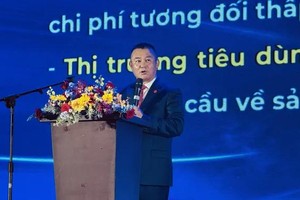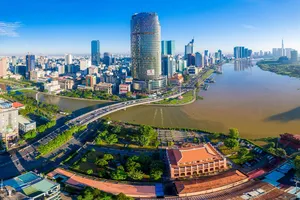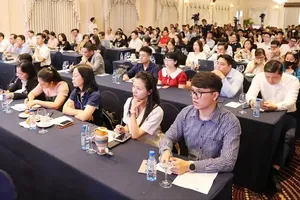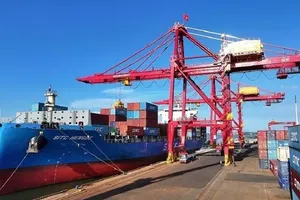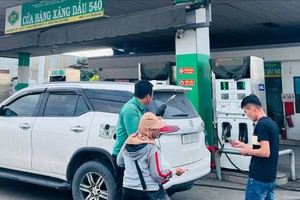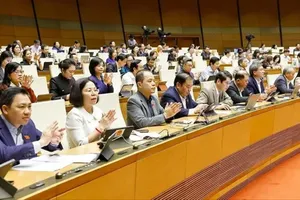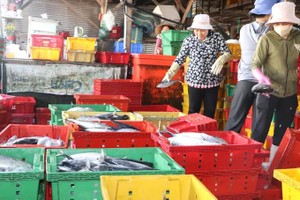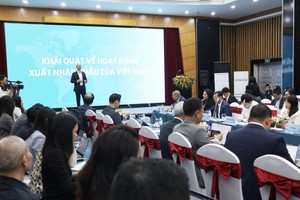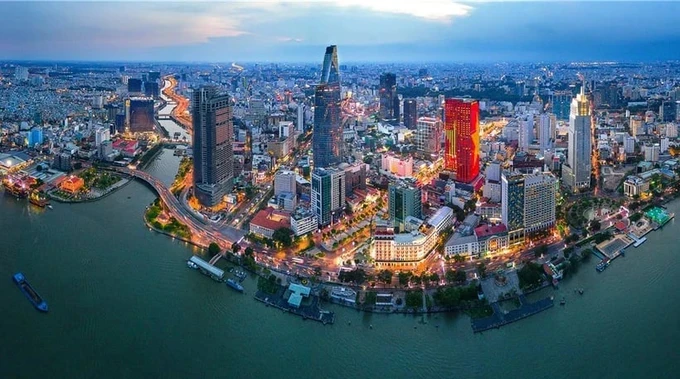
Director of the HCMC Institute for Development Studies Dr Truong Minh Huy Vu suggests the motto “Think Big – Do Big – Win Big”.
In line with the Politburo’s directives, both HCMC and Da Nang City have conducted surveys and proposed potential “administrative boundaries” for the establishment of Vietnam’s International Financial Center within their respective jurisdictions. Vietnam’s approach seems to diverge from the more conventional “soft space” model adopted by many nations, where geographical limitations are absent, as seen in Hong Kong’s special administrative region, the island nation of Singapore, or London’s financial district.
Within Vietnam’s context, the selection of sufficiently expansive administrative boundaries is deemed crucial to ensure the necessary flexibility and openness for supporting service industries. The envisioned financial center should be an interconnected complex of buildings and projects, seamlessly catering to financial activities and ancillary services such as accommodation, restaurants, and hotels.
In HCMC, the central District 1 area, bordering pedestrian thoroughfares, the Saigon River, and home to a significant concentration of existing office towers, presents a highly advantageous location for the initial development of the financial center. Concurrently, the expansive Thu Thiem area, boasting a substantial land reserve (over 650ha) and convenient connectivity to the central district, offers complementary potential. These two zones can be readily linked, fostering synergy and shared amenities across the riverbanks.
General Director Bui Truong of Roland Berger Vietnam, Advisor to the Dubai International Financial Center talks about the “1+3” model to the city’s financial center.
HCMC already stands as the nation’s most concentrated hub for financial institutions, commanding over 24 percent of the country’s total mobilized capital and more than 28 percent of its total outstanding loans. Notably, the HCMC Stock Exchange (HOSE) accounts for a staggering 95 percent of the national market capitalization and contributes over 54 percent to Vietnam’s GDP.
HCMC should, therefore, gain valuable insights from the trajectories of successful international financial (IFC) models like Singapore, Shanghai, Dubai, and Dublin. However, it is imperative to adapt these learnings to the city’s unique circumstances and realities.
For instance, Singapore has strategically focused on cultivating its asset management and fintech sectors, while Hong Kong has implemented policies designed to attract international banks. Dubai, on the other hand, has distinguished itself through compelling policies and incentives within its free trade zones.
Consequently, HCMC should formulate a tailored roadmap for its IFC development. This journey should commence with the establishment of a robust financial bedrock in the central district, followed by a strategic evolution into a regional IFC, and ultimately, its ascension to the status of an IFC.
The envisioned IFC in HCMC will adopt a “1+3” model, with the core being the international financial center itself, complemented by three specialized centers for green industry, healthcare, and education-training, fostering a comprehensive financial ecosystem. This IFC will prioritize the development of core financial products, encompassing the money market and banking system, the stock market, corporate bonds, and the commodity market.
Investment Director Nathan Hoang of IDGX Capital Fund mentions pioneering money and tokenized assets.
Vietnam stands out as one of the most dynamic nations in the burgeoning market for money and tokenized assets, possessing significant potential to pilot and subsequently catalyze the formation and growth of this sector.
Statistics reveal that by 2024, nearly 20 million Vietnamese individuals (17.4 percent of the population) had owned cryptocurrencies, ranking the country seventh globally in cryptocurrency adoption rates. Considering transaction volumes relative to the economic scale, Vietnam ranked fifth worldwide in cryptocurrency acceptance in 2024. This positions Vietnam to potentially accumulate substantial tax revenue from transactions, exchange licensing fees, and transaction profits, provided a robust regulatory framework is established through licensed exchanges.
Currently, three key challenges demand attention, namely the risk of inconsistent and loosely defined policies that clash with existing regulations; the risk of cryptocurrency misuse for illicit activities such as money laundering, terrorist financing, and fraud; and the risk of cryptocurrencies destabilizing the VND.
Lawmakers and experts have already proposed solutions to these challenges, ranging from refining the legal framework and establishing a dedicated regulatory body with the authority to issue pilot licenses (sandbox approach), to implementing robust anti-money laundering (AML) and know your customer (KYC) procedures. Furthermore, the potential issuance of a central bank digital currency (CBDC) and the careful regulation of stablecoins to stable-value assets are also under consideration.


